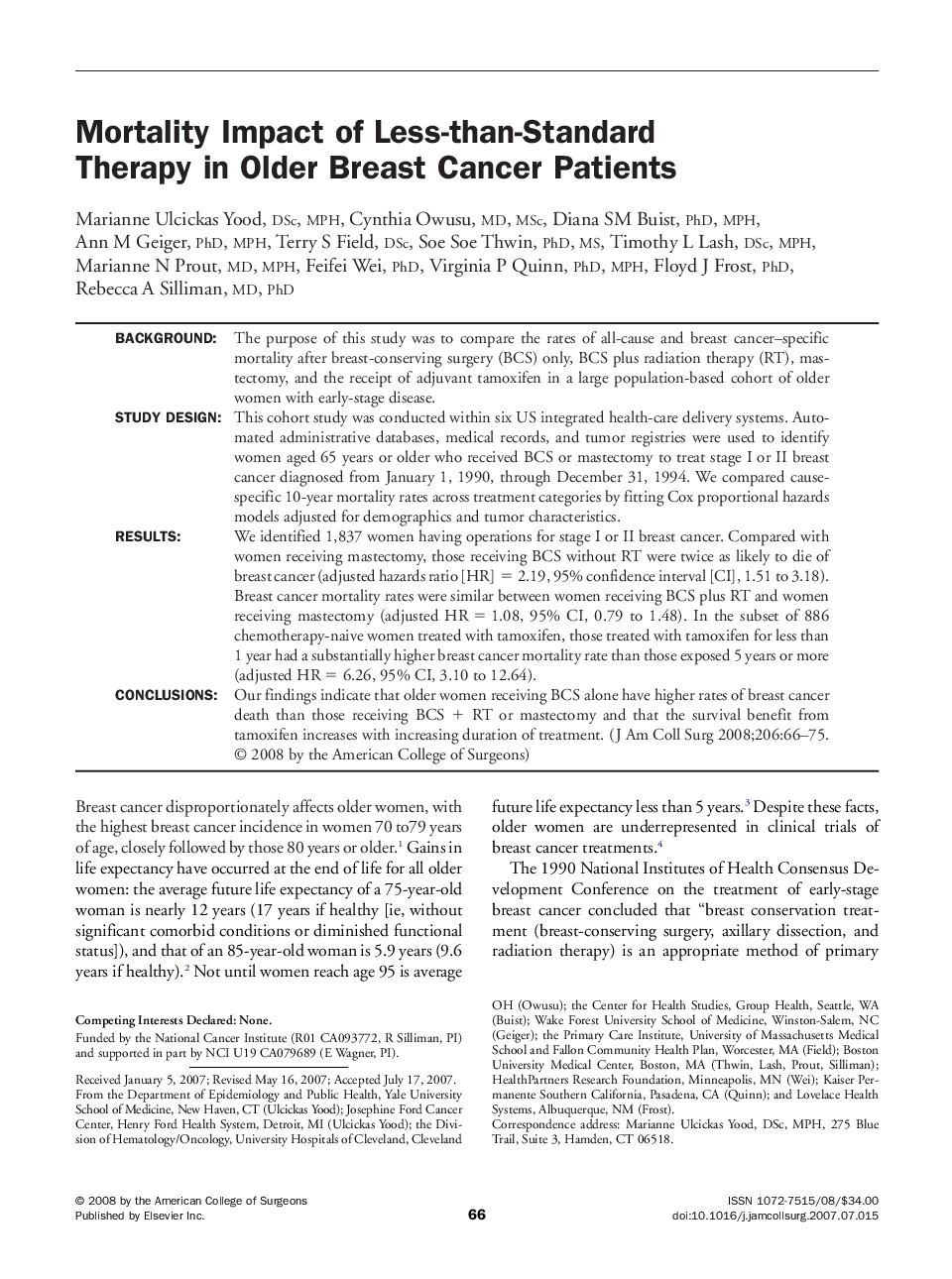| Article ID | Journal | Published Year | Pages | File Type |
|---|---|---|---|---|
| 4295816 | Journal of the American College of Surgeons | 2008 | 10 Pages |
BackgroundThe purpose of this study was to compare the rates of all-cause and breast cancer–specific mortality after breast-conserving surgery (BCS) only, BCS plus radiation therapy (RT), mastectomy, and the receipt of adjuvant tamoxifen in a large population-based cohort of older women with early-stage disease.Study DesignThis cohort study was conducted within six US integrated health-care delivery systems. Automated administrative databases, medical records, and tumor registries were used to identify women aged 65 years or older who received BCS or mastectomy to treat stage I or II breast cancer diagnosed from January 1, 1990, through December 31, 1994. We compared cause-specific 10-year mortality rates across treatment categories by fitting Cox proportional hazards models adjusted for demographics and tumor characteristics.ResultsWe identified 1,837 women having operations for stage I or II breast cancer. Compared with women receiving mastectomy, those receiving BCS without RT were twice as likely to die of breast cancer (adjusted hazards ratio [HR] = 2.19, 95% confidence interval [CI], 1.51 to 3.18). Breast cancer mortality rates were similar between women receiving BCS plus RT and women receiving mastectomy (adjusted HR = 1.08, 95% CI, 0.79 to 1.48). In the subset of 886 chemotherapy-naive women treated with tamoxifen, those treated with tamoxifen for less than 1 year had a substantially higher breast cancer mortality rate than those exposed 5 years or more (adjusted HR = 6.26, 95% CI, 3.10 to 12.64).ConclusionsOur findings indicate that older women receiving BCS alone have higher rates of breast cancer death than those receiving BCS + RT or mastectomy and that the survival benefit from tamoxifen increases with increasing duration of treatment.
